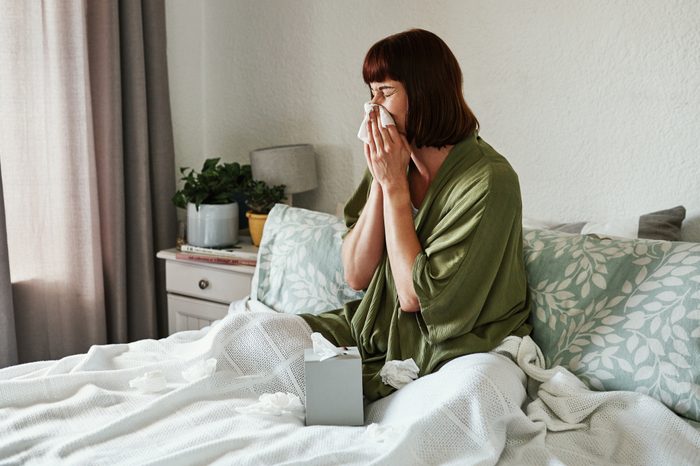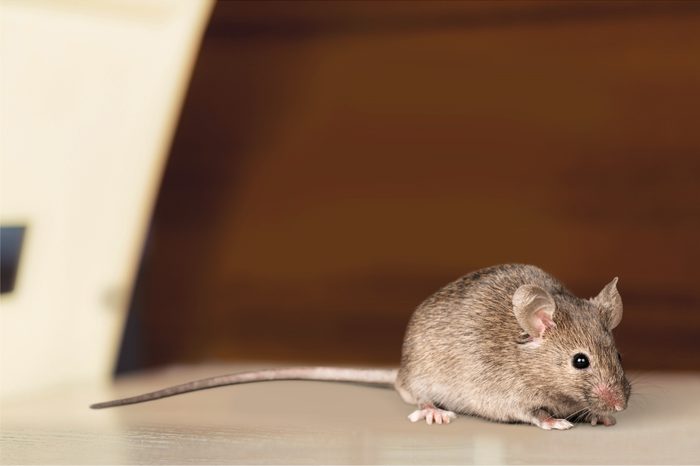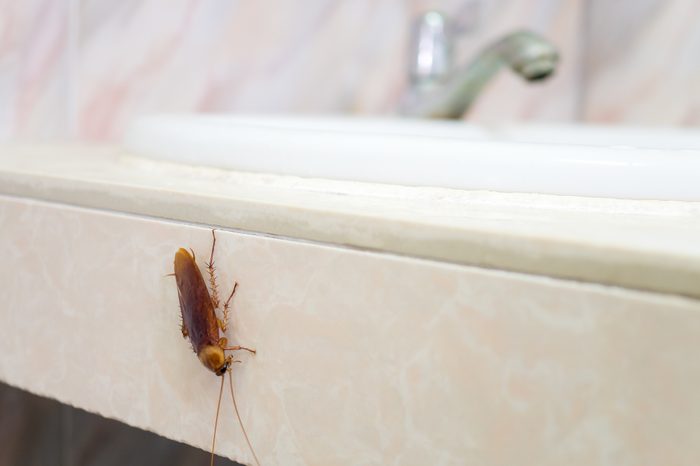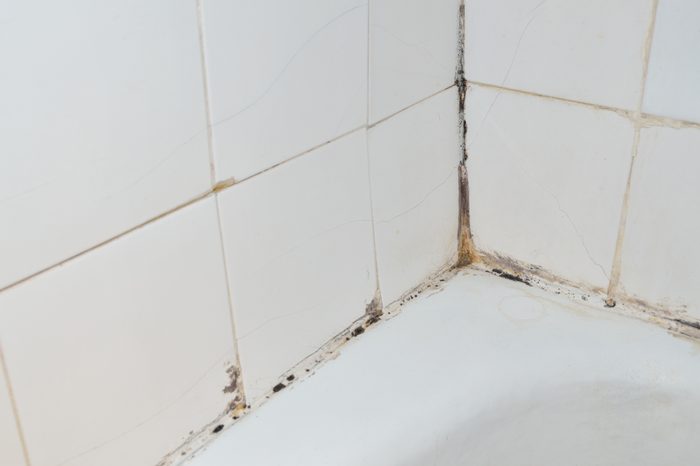Common indoor allergens that trigger allergies
When pollen season is in full force, it makes sense if your nose feels stuffy. However, what if you have allergy symptoms when there’s no obvious cause? Well, you may be reacting to indoor allergens. Most homes contain aeroallergens, or allergy-triggering substances, within the dust and air that you breathe. In fact, many households are teeming with them.
A total of 90 percent of homes have three or more detectable indoor allergens, and 73 percent have high levels of at least one allergen, according to a 2018 study that examined dust samples vacuumed from nearly 7,000 bedrooms across the country. Homes with high loads of multiple allergens tend to have pets (such as cats or dogs) and pests (such as cockroaches or mice). The findings are published in the Journal of Allergy and Clinical Immunology.
Dust mites, mold, and animal allergens are the main indoor offenders, and millions of people suffer from year-round allergies from these sources, according to the American Academy of Allergy, Asthma and Immunology (AAAAI). All of these triggers contribute to allergic rhinitis—basically a stuffy, runny nose and other hay fever symptoms caused by an immune system response to an allergen.
“People with year-round allergies tend to complain of stuffy noses and post-nasal drip. If it’s a pet allergy, it’s also common for there to be a lot of sneezing,” says Sandra Lin, MD, professor and vice director of Johns Hopkins department of otolaryngology-head and neck surgery in Baltimore. “If you have asthma, indoor allergies can also kick up the asthma.”
Other symptoms can include an itchy nose or eyes, coughing or the urge to frequently clear your throat, according to the American Academy of Otolaryngology-Head and Neck Surgery Foundation’s clinical practice guidelines for allergic rhinitis. Fatigue is a common symptom in children.
The good news is that there are plenty of things you can do in your home to curb indoor allergen levels and get relief. Dr. Lin suggests seeing an allergist, who can give you a blood test or skin-prick test to help you identify the exact source of your symptoms.
Take a look at the nine most common indoor allergy triggers and how to reduce or eliminate them.

Dust mites
The most common indoor allergen, dust mites, are microscopic pests that congregate in areas such as bedding, carpet, upholstered furniture, and stuffed animals, according to the AAAAI.
“Dust mites are heavy and don’t stay in the air a long time, but as soon as you flop on the mattress or plop your head down on a pillow, you send plume of dust mites into air and breath it in,” says John J. Costa, MD, medical director in the division of allergy and clinical immunology at Brigham and Women’s Hospital in Boston. The dust mites can get into your eyes, nose, and lungs.
Unfortunately, dust mites are so common and pervasive in homes, especially in humid regions such as the South or Northeast, that it’s almost impossible to eliminate them. But there are things you can do to slash their numbers and improve your nasal symptoms. The key is to take several steps at once, Dr. Lin says.
Get allergen-proof fabric covers that are tightly woven, such as those sold by Mission Allergy, for your mattress, box spring, and pillows. (Zippered plastic covers are also effective if you can tolerate the crunchy sound and quick heating). Vacuum frequently with a small-particle or high efficiency particulate (HEPA) filter and wash bedding in hot water at least once a week, according to the AAAAI. In addition, remove or reduce upholstered furniture, fabric curtains, and carpeting—all havens for dust mites—if the allergy is confirmed, Dr. Lin says.
Dust mites thrive in humid environments, so dehumidifiers and air conditioners can also be helpful, especially in summer months. Dr. Costa recommends keeping indoor humidity at 40 to 50 percent.
If you have a moderate or severe allergy to dust mites, there is an at-home form of immunotherapy that you can get by prescription. Immunotherapy exposes you to small amounts of an allergen over time to decrease your body’s reactivity in the long term. You put a dissolving tablet of purified dust mite protein under your tongue daily and it’s the oral equivalent of allergy shot, Dr. Costa says.

Cats
The second leading allergy trigger is cat allergens. Researchers estimate that between 10 to 30 percent of people have a sensitivity, according to a 2018 review published in the journal Allergy, Asthma & Clinical Immunology. The main cat allergen is a protein called fel d 1, and it’s found in their saliva, on their fur, and in the tiny particles of dead skin that they shed, which is known as dander.
“Fel d 1 is the perfect allergen,” says Cristina Porch-Curren MD, FAAAAI, an allergist based in Ventura County, California. “It’s size is not too big or too small and it’s easily inhaled into your lungs and gets into your eyes. Lots of symptoms like wheezing and eye issues occur right away.” If the cat licks you, it’s also possible to get hives or welts.
If you aren’t willing to part with your pet, the next best thing is to keep your cat out of the bedroom. “There are really good clinical results by making the bedroom animal-free with minimal carpeting and a HEPA filter running,” Dr. Costa says. “The rest of the house will be full of dander but at least the bedroom—where you spend a third of your life—will be really clean.” (The same goes for those who are sensitive to dogs).
You can get portable HEPA filter units to place in your bedroom and HEPA filters for your cooling system if you have central air. There are also allergens in cat urine, so it’s a good idea to wear gloves and possibly a mask when cleaning the litter box, Dr. Porch-Curren says. (These are the best air purifiers for pets to consider.)
The AAAAI also suggests talking to an allergist about immunotherapy shots. However, if you ultimately decide to find a new home for your cat, keep in mind that it can still take months for pet allergens to go away, according to the AAAAI.

Dogs
Dog allergens are much larger and heavier proteins than cat allergens, which makes them easier to fall to the ground. This means vacuuming can be really effective at reducing levels in the home, Dr. Porch-Curren says. As with cat allergies, you’ll want to make your bedroom a dog-free zone and get a HEPA filter. You can also use dog gates to confine your pet to a smaller area of your home. Plus, try to keep your dog off furniture and out of your car as much as possible, according to the National Institute of Environmental Health Sciences. (Find out if a car air purifier can help your symptoms.)
Bathing your dog will also decrease allergen load, but it won’t be enough to reduce your symptoms unless you do it often (twice a week with shampoo for five minutes followed by a blow dry), according to the American Academy of Otolaryngology-Head and Neck Surgery Foundation. If you’re game for sudsing up your pooch that often, talk with your vet to make sure it won’t be too irritating for your dog. (Also, check out these surprising triggers of spring allergies.)
Dogs are also great at tracking outdoor pollens and molds into your home if you have additional sensitivities. “Most dogs go outdoors and sit in grass under tress pollinating and then create bigger exposures inside,” Dr. Porch Curren says. And if you visit other homes with dogs, wash your hands and all clothing as soon as you get home since the allergen can travel with you. (The same goes for cats if you have a cat allergy.) Unfortunately, that’s one of a few reasons letting your dog sleep in your bed might not be a good idea.

Mice and rats
The main allergens from mice and rats are proteins in their urine. They can become easily airborne and be particularly dangerous for people with asthma. For example, a study published in the Journal of Allergy and Clinical Immunology: In Practice found an association between high levels of the common mouse protein Mus m 1 in homes and more severe asthma in children.
The AAAAI recommends integrative pest management, which includes sealing cracks and crevices, placing out traps, vigorous cleaning, and careful food storage and disposal. Put opened pantry foods in containers with tight-fitting lids, always eat food in the kitchen instead of carrying it to other rooms, and sweep floors and wipe counters after every meal. This will help limit the exposure and reduce the allergy symptoms.

Pet rodents or rabbits
Allergens from urinary proteins can be an issue if you have a pet mouse or other mammals. These include guinea pigs or hamsters, or a rabbit, according to the AAAAI. Keep these pets out of bedrooms and avoid close contact—such as holding or hugging the pet—if you’re sensitive. “Infestations are much more problematic than a solo pet,” Dr. Costa says. “If the pet is confined, they aren’t emitting enough of it into the environment.”
It’s also common to react to the hay-like bedding or food used for these types of pets if you are allergic to grasses, Dr. Porch-Curren says. In addition, if the bedding is damp it can grow mold, another common indoor allergen, so it’s important to clean their spaces often. (Make it easier to maintain with one of the best air purifiers for mold.)

Cockroaches
Cockroach allergens are similar to dust mite allergens in that they stick to other particles and then settle on surfaces, according to American Lung Association. The most common way to breathe in the cockroach allergen is via dust collected in pillows, bedding, or other fabrics. This happens because tiny debris and feces from an infestation of cockroaches can become airborne.
Be proactive about setting baits, cleaning throughout your home, disposing of food, and sealing cracks and crevices that can be a point of entry, recommends the AAAAI. Portable HEPA purifier units can also help since they reduce airborne particulate matter by as much as 50 percent. This can help keep your indoor allergens at bay.

Mold
Mold thrives in damp regions of your home, such as the bathroom or basement. So, when it grows, you breathe in spores that have dispersed in the air. “A simple thing you can do is look around your house. I used to have fabric blinds in my bathroom that were always down, says Dr. Lin. And then one day, she continues, “I pulled them up and they were full of mold.”
It’s important to locate and fix any leaks or sources of standing water and limit the number of houseplants. Dr. Lin suggests also looking for mold in collections of old books, papers, or shoes. She advises to clean bathroom surfaces at least once a week; check under sinks; and under and around kitchen appliances and air conditioners for any water that needs to be removed.
Dr. Costa recommends doing a simple sniff test. “If it smells musty, it means fabric has some mold growth,” she says. If you plan to store clothes, coats, or other fabrics in your basement, keep them in tight plastic containers. Ever forget about laundry in the washing machine and it has a musty smell? That’s mold.
Dr. Costa offers a tip for the laundry and other small mold cleanups. Use a small measuring cup to make a bleach solution with nine parts water to one part bleach. If you find areas of mold that are larger than 10 square feet (less than a 3 foot-by-3-foot patch), contact a mold remediation company for the cleanup, according to the Environmental Protection Agency. Mold remediation companies can test for mold levels in the home if an allergy has already been identified, Dr. Lin says. Wear a mask if you are cleaning any smaller areas yourself.
On windy days, keep your windows closed since outdoor mold spores can blow into your home, Dr. Porch-Curren says.

Houseplants
Mold can grow in the damp soil after watering a houseplant. It’s more commonly the spores in the soil that can grow mold. This makes it tough to detect an issue, Dr. Porch-Curren says.
If you have houseplants, you can probably keep your favorites so long as you limit the number and size. “If you have a few indoor plants that you keep on windowsill or one floor plant, it’s unlikely that it’s meaningful exposure, but if you’re making your house look like a greenhouse that’s probably not a good idea,” Dr. Costa says.
Dr. Porch-Curren recommends keeping plants out of the bedroom and suggests swapping in some fake versions.

Down bedding
Down comforters and pillows can be comfy and warm, but they also may contain the dander of the bird, Dr. Porch-Curren says. However, a sensitivity to bird allergen is rare. A more likely reason why down bedding causes allergies is due to the accumulation of dust mites or mold (from when it’s damp). Tip: Make sure the covers are tightly woven, Dr. Porch Curren says. She also recommends replacing pillows every year and mattresses every seven years. This can reduce the accumulation of skin flakes and dust mites over time.

Finding relief
“Allergies tend to develop when you’re a child or young adult and the severity can wax and wane throughout your life,” Dr. Lin says. Your symptoms will also depend on how much exposure you have to allergens that trigger your immune system.
If you are struggling to find relief, find a local allergist who can help you identify your sensitivities and manage them with a combination of medicines (such as antihistamines or nasal steroids), home strategies, and immunotherapy. If you start immunotherapy, it typically takes about a year to notice improvements, Dr. Porch-Curren says.

